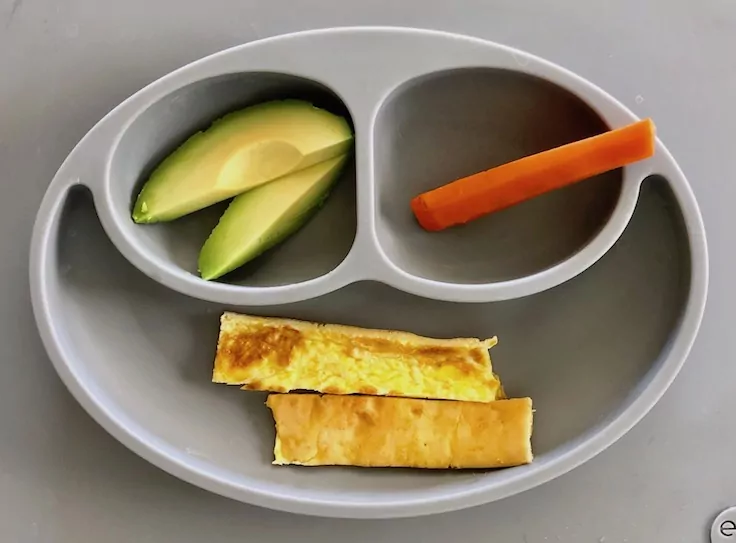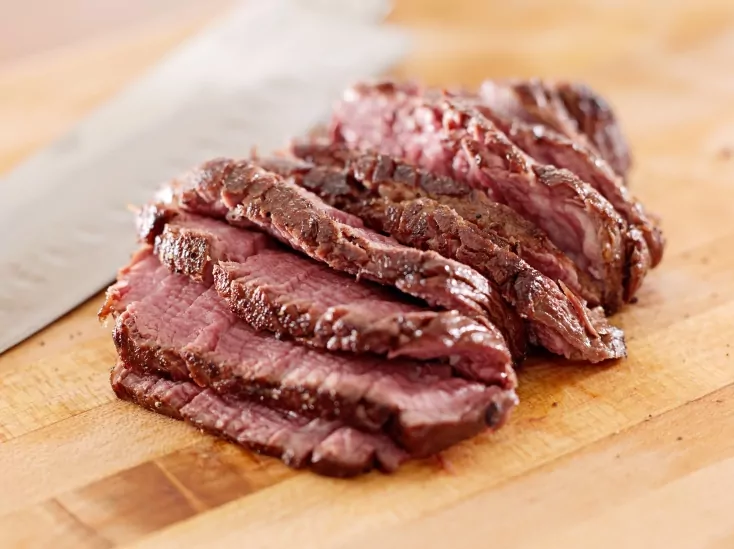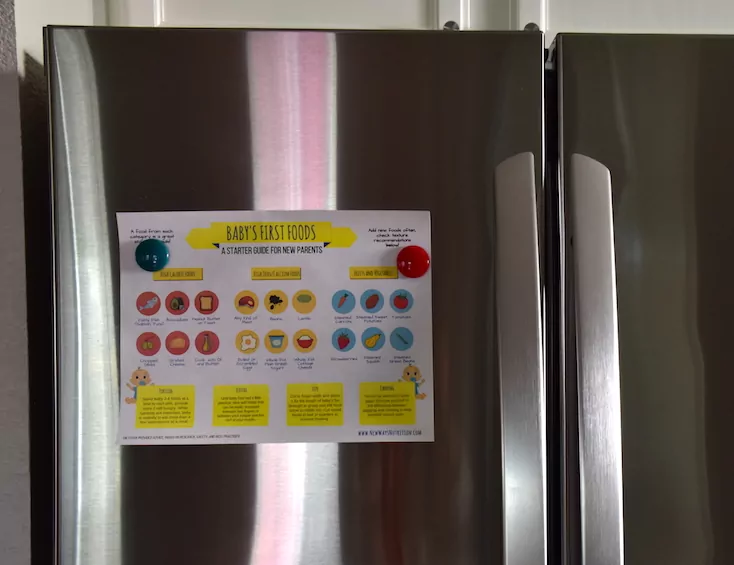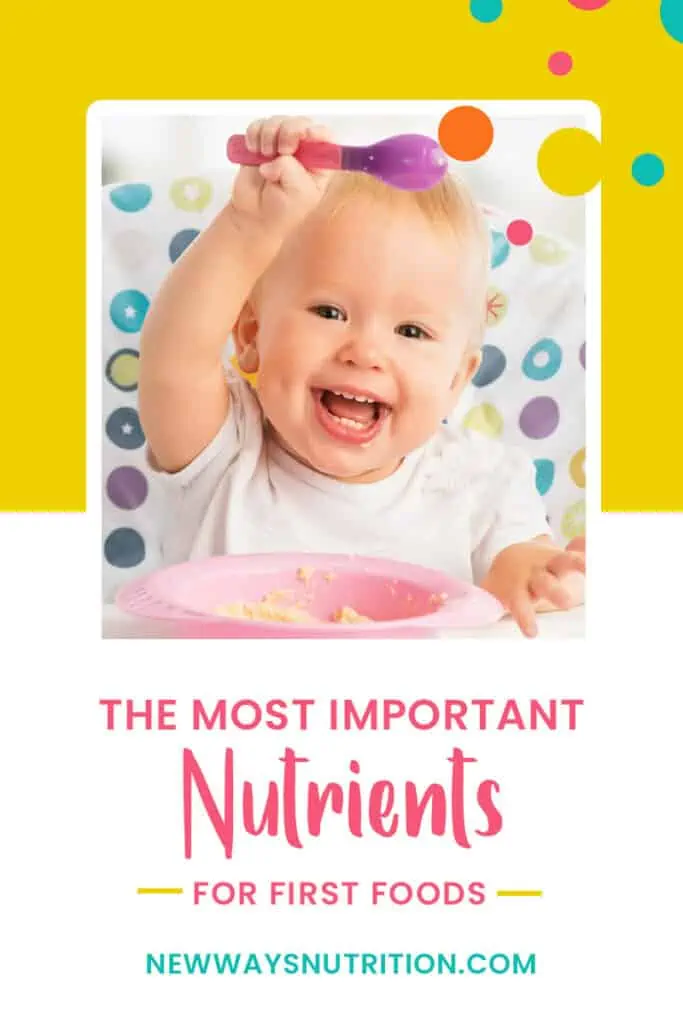When it comes to giving your baby finger foods, there are a handful of things to keep in mind. How to start finger foods, when to start offering them, and what to actually give your baby on their plate are all important things to keep in mind!
When should you start finger foods with babies?
When it comes to starting solid foods you want to pay attention to your baby's development and the signs of developmental readiness. These will help you to assess your baby's own readiness cues, and be confident in your timeline for starting.
One thing to keep in mind is that when we say solid foods, we are talking about anything that is not breast milk or formula.
Solid foods don't just mean finger foods. Mashed food, pureed baby food, they all count as solid food! Which means that there is no different time for starting finger foods than starting pureed foods.
Believe it or not, babies are actually developmentally ready to eat finger foods right around that 6 months of age mark when they are showing the signs of developmental readiness.
Once they are showing the signs of readiness, though, what should you actually put on their plate?
More: For more help with baby led weaning and how to help your baby succeed with eating, be sure to check out this article with a comprehensive guide to baby led weaning and first baby foods!

What are the best finger foods to start your baby on?
When it comes to introducing finger foods to your baby, starting with only one food at a time is no longer the recommendation. We know that introducing variety to your baby's diet, as well as introducing the common food allergy causing foods early and often is the way to go.
So with that in mind, let's learn a way of thinking of those first finger foods that makes it easy, and can help guide your meals for years to come!
Create your baby's first foods plate
When it comes to feeding your baby we want to think of a plate as needing 3 different food groups, or food categories. On your baby's plate you need an iron-rich food, a high calorie food, and a fruit or veggie.
So which foods do you offer at each meal? Try to think of it as one food from each of the categories below.
Iron-rich finger foods for babies
One of the biggest nutrients of concern for babies 6 months and older is iron. If you haven't already had your pediatrician talk to you about it, you're likely to hear something in the coming months.
Getting adequate iron is important for your baby, and the general scientific consensus currently is that breast milk starts to not be an adequate source of iron as baby gets older than 6 months.
Formula generally contains adequate iron. But as babies start to drink less and eventually wean from formula at a year, they will need to be offered iron-rich foods. Offering them from the beginning of finger food will help them learn to like them more.
The good news is the need for iron, especially in breast fed babies, is a gradual change. Helping your baby to learn eating skills starting at 6 months and offering iron rich foods frequently has been shown to provide adequate supplies of iron for most babies.(ref)
So what is considered an iron-rich food?
Here are some ideas:
- Red meat, including steak and ground beef
- Liver
- Eggs, from scrambled eggs to hard boiled and everything in between!
- Lentils
- Beans, any kind
High calorie finger foods for babies
As your baby continues to grow, they start to need complementary foods to provide calories. This doesn't mean instead of breast milk or formula, though. It means in addition to the milk. Choosing a high-calorie food can help to get your baby the calories that they need to continue to grow.
Some ideas might be:
- Fatty fish
- Avocados
- Sweet potatoes
- Cooking with oils (like olive oil or avocado oil) and butter
- Full fat plain greek yogurt (Learn about the best yogurt for babies here)
- Lightly toasted bread with a dip or spread on top (Learn about the best bread for babies here)
- Nut butter (spread thinly or stirred into something so it is not a choking hazard)
More: Head here for more high calorie food ideas!
Fruits and veggies for babies
Your baby needs to be exposed to lots of different flavors and textures. One of the best ways to get in all those new foods is by offering many different fruits and vegetables.
Fruits and vegetables also contain a plethora of vitamins and minerals of importance. Like Vitamin C which can help with iron absorption. The only limit on this category is the texture your baby is able to handle at their current developmental age. Sticking with ripe fruits and steamed or soft veggies is the way to go. But other than that, the sky really is the limit!
Ideas:
- Steamed carrot sticks
- Tomatoes
- Steamed green beans
- Steamed broccoli
- Strawberries
- Kiwi
- Banana
What other nutrients does my baby need in their finger foods?
Focusing on specific nutrients that babies need can be a full time job! It's overwhelming, and confusing. And frankly, unnecessary.
Do babies need other nutrients outside of iron and calories? They do! But by focusing on these 3 categories, you'll be getting in those nutrients. Without the need to focus on them and worry about getting a perfectly balanced plate with a 100 different nutrients on it.
If you want a bit more detail about nutrients of concern, here are some examples!
As they grow, things like zinc, omega-3s, and selenium become more important.
Red meat is a great source of zinc as are nuts, eggs, and beans.
Fish and seafood can be a great source of both selenium and omega-3s.
Adding things like chia seeds and omega-3 enriched eggs can also help with omega-3s.
At the end of the day, it's not about individual nutrients, though. It's about offering a variety of foods from the three different categories. By focusing on that, you will be offering a well rounded diet that helps your baby thrive!
More: For more specific help on the different nutrients and what foods can help you meet your baby's needs, check out the Grow Baby Grow ebook!
What finger foods should babies avoid?
Now that we've talked about what foods we want on their plate, let's quickly talk about the ones to avoid.
When it comes down to it, the vital things to avoid are really all about choking hazards. Things like hot dogs and hard candies are traditionally thought of as a choking hazard, and they definitely are for babies.
But things like raw veggies and hard fruits are also choking hazards for babies. (Think something like raw baby carrots. If your baby was to break a bit of raw carrots off, it would be the perfect size to plug their airway.)
Things like grape tomatoes or cherry tomatoes, grapes, and nuts are also choking hazards. And just to make it slightly complicated, even things like biscuits, bread, and leafy greens can be a choking hazard.
Getting familiar with choking hazards specifically for babies is one of the best things you can do for your peace of mind. It can seem complicated at first, but once you get the hang of it it really can make feeding much less stressful.
Outside of those dangerous foods, it is generally a good idea to avoid too much salt in your baby's diet, as well as added sugars. Honey specifically is one that should never be given to a baby under 1.
It is okay to give babies cow's milk in a food. It should not be given as a drink before 1 year of age, however.
What about the texture and size of finger foods for baby?

When it comes time to start offering finger foods, you do want do prioritize soft finger foods for the first several months of eating.
For the first month or so the general rule of thumb is that the first foods should be able to be squished between your thumb and forefinger. Alternatively, they can be very fibrous where baby can't break it off.
An example of a fibrous food would be a slice of red meat that baby can gum and suck on but has very little chance of actually taking a bite.
There are various sites and groups out there that have different recommendations about textures. The research and experts show, though, that the best way to reduce the risk of choking is to ensure that at the beginning babies are only provided soft foods or ones that are not able to be broken off.
The best sized first foods for baby are generally 1-2 adult fingers wide. For length, you want them to be around one and a half times the length of your baby's fist. Although there is no perfect finger food size, and different things will work for different babies.
The general idea is long enough so that they can grasp the finger food and still have enough room to nibble on it.
How to give finger foods if you aren't doing baby led weaning
All of these recommendations work to give your baby first finger foods no matter what feeding process you are following. If you are starting with purees, it is still important to prioritize the nutrients above.
And there is nothing that says you can't introduce finger foods in a baby led weaning style while also serving purees! it is absolutely safe to combine the two feeding methods.
If you choose to wait several weeks before introducing finger foods, you can still give a finger-size piece of food. But if your baby is already used to eating a good amount, you might want to give bite sized pieces instead.
These small pieces of food are the perfect size for your baby's mouth, and are easy for them to pick up as soon as they have developed their pincer grasp.
If I give my baby finger foods like this will they gag a lot?
Learning how to eat takes time, and is a skill that your baby will develop. When learning to eat, it will not be out of the question that your baby gags.
If you are practicing a baby led weaning style of feeding with finger length finger foods from the beginning, there might be some more gagging at the beginning as they are figuring out how to manipulate the food in their mouth.
If you are starting with baby food purees and then moving to smaller pieces of food, your baby might not gag as much in the beginning. But these babies to tend to gag a lot more later on as they are learning how to eat finger food.
Which means that at the end of the day, you are likely to see your baby gagging. Know the difference between gagging and choking, and how to respond to each. And know that it is normal!
How do I remember all these guidelines?
I'm glad you asked! Even though I do this for a living, when it came time to start feeding my oldest daughter I still needed an easy way to figure out what first foods to give her. That is when I started implementing this 3 category system for balanced plates. I cannot tell you how much stress it has saved me over the years. We still use the 3 category system today, with preschoolers and adults alike!

When I first started using this system, I created a handout to hang on my fridge. It has ideas of what to offer in each category, and reminders of textures and portion sizes to start with.
Thousands of people have downloaded it, and I can't tell you how many times I have heard people swear by this 3 category system for making meals so much easier!
I remember referring to this handout every day just to make sure that i was offering my oldest a balanced meal when we started. Now it is second nature for me, and it will be for you, too, once you start practicing it!
Grab the handout below!


Thank you!!
You’re welcome!
[…] oatmeal, fried eggs, peanut butter spread thinly on toast, etc. Here’s more information and ideas for first foods and how to know that they’re healthy choices. The author recommends always serving an iron-rich […]
[…] can get a handy infographic with examples to print out and put on your fridge by going to this website and scrolling all the way to the […]
Thank you… very useful ..